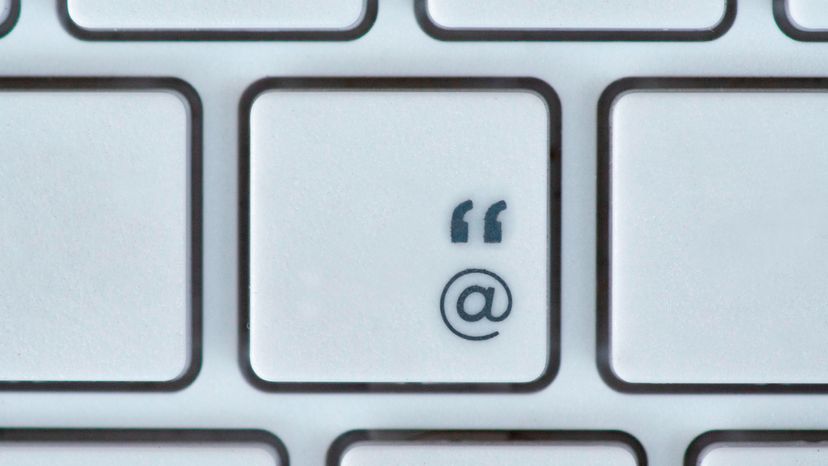
The funny little a with its tail circling back around it is probably one of the most commonly used symbols today. So it is truly amazing to learn that there is no official, universal name for it. The most accepted term, even in many other languages, is to call it the at sign. But there are dozens of different words used to describe it. A lot of languages use words that associate the shape of the symbol with some type of animal.
Here are a few examples of the many exotic terms associated with the @ symbol:
Advertisement
- apestaart - Dutch for "monkey's tail"
- arroba - Spanish for "at"
- snabel - Danish for "elephant's trunk"
- kissanhnta - Finnish for "cat's tail"
- klammeraffe - German for "hanging monkey"
- kukac - Hungarian for "worm"
- dalphaengi - Korean for "snail"
- grisehale - Norwegian for "pig's tail"
- sobachka - Russian for "little dog"
Before it became the standard symbol for e-mail, the @ symbol was typically used to indicate the cost or weight of something. For example, if you bought five oranges for $1.25 each, you might write it as 5 oranges @ $1.25 ea. It is still used in this manner on a variety of forms and invoices around the world.
The actual origin of the symbol is uncertain. It was used by monks making copies of books before the invention of the printing press. Since every word had to be painstakingly transcribed by hand for each copy of a book, the monks that performed the copying duties looked for ways to reduce the number of individual strokes per word for common words. So, the word at became a single stroke of the pen as @ instead of three strokes. While it doesn't seem like much today, it made a huge difference to the men who spent their lives copying manuscripts!
Another origin tale states that the @ symbol was used as an abbreviation for the word amphora, which was the unit of measurement used to determine the amount held by the large terra cotta jars that were used to ship grain, spices and wine. Giorgio Stabile, an Italian scholar, discovered this use of the @ symbol in a letter written in 1536 by a Florentine trader named Francesco Lapi. It seems likely that some industrious trader saw the @ symbol in a book transcribed by monks using the symbol and appropriated it for use as the amphora abbreviation. This would also explain why it became common to use the symbol in relation to quantities of something.
Advertisement


